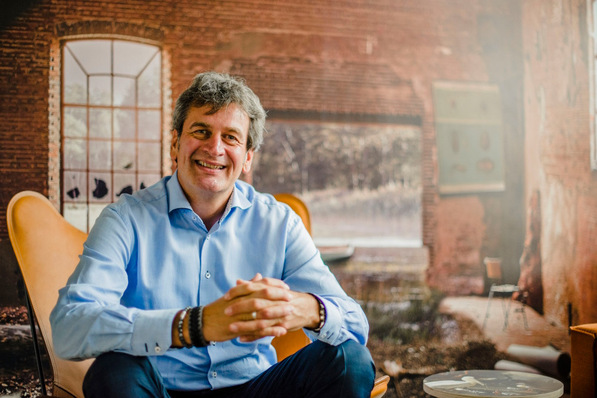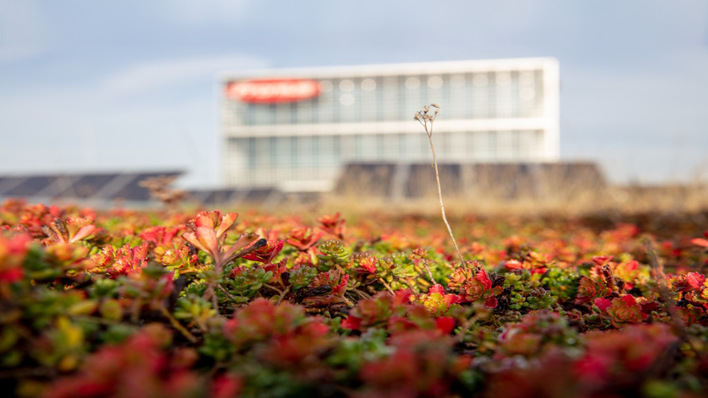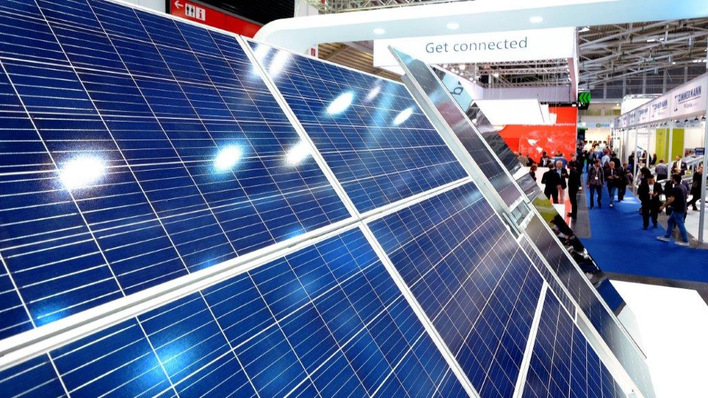How is the demand for storage units developing in the different segments of commercial and large storage units?
Martin Peters: We are seeing a steady increase in demand in both areas. We receive around 80 per cent of enquiries in the large-scale storage segment and around 20 per cent in the commercial and industrial segment.
How do you expect demand to develop over the next few months?
Martin Peters: Current studies suggest that the overall market in Germany will grow by more than 20 per cent in 2024. The market is also expected to continue to grow at this rate over the next five to ten years. At Intilion, we assume that demand for our products will follow the market trend and increase.
Alina Möbius: Experience shows that we see an increase in demand towards the end of the year.
What do you attribute this development to?
Martin Peters: Basically, the continuing trend towards renewable energies is one of the drivers of the rising demand. The German government's decision to extend the exemption from grid fees for energy storage systems until 2029 with the reform of the Energy Industry Act (EnWG) is also currently providing an additional boost. This gives investors and project developers the necessary planning and investment security for storage projects. Previously, energy storage systems would only have been exempt from grid fees if they were commissioned before August 2026. This would have meant that grid fees would have had to be paid for the same kilowatt hour if storage units had been commissioned later.
See also: Intilion integrates storage into Phoenix Contact's All Electric Society Park
Alina Möbius: Companies are becoming more and more concerned with their energy efficiency, their ecological footprint and their electricity costs, which is why they are increasingly focussing on renewable energies and energy storage. In the area of pre-meter storage units, i.e. grid storage, energy storage is becoming increasingly important as a flexibilisation element to buffer the volatility of renewable energies. The combination of solar power plants and storage units is also being driven by innovation tenders.
Which countries are growth markets?
Alina Möbius: In Europe, the UK, Spain, Italy and the DACH region, i.e. Germany, Austria and Switzerland, currently account for 80 per cent of the market. However, we are also seeing increasing growth in many areas of Europe, such as Eastern Europe, Scandinavia and the Benelux countries, and assume that these markets will gain market share in the future.
Which business models are relevant for commercial storage systems?
Alina Möbius: Peak shaving, backup power, increasing self-consumption and expanding the grid connection for e-mobility are still the most important business models for commercial storage systems.
What business models are used to set up the large storage containers - is it exclusively about grid operators who want to use them to stabilise grids or are there now also requests from solar park developers who combine the systems with storage units?
Martin Peters: We are receiving enquiries for large-scale storage projects from both grid operators and solar park developers. The innovation tender, for example, is a driver of the solar storage unit combination. With a view to grid stabilisation, trading models are becoming increasingly important.
How is the competitive situation on the market developing?
Martin Peters: The market is becoming increasingly attractive, which is why more and more new competitors are entering it - especially from Asia.
How are you responding to this competitive situation?
Martin Peters: With our comprehensive end-to-end service package, from project planning to end-of-life, we offer our customers not just the product, but a complete solution. Depending on the application, we design customised solutions for our customers, including the design of the battery system, converters, transformers and switchgear, and take care of installation and commissioning. Once the system has been installed, we monitor the systems via a cloud management system and guarantee reliable operation with preventive maintenance.
How do you assess the supply chain situation - are there enough materials for Electricity storage units available in Europe, also with regard to European production capacities?
Martin Peters: Basically, most electronic components still come from Asia. In particular, there will not be competitive alternatives to battery modules from China in Europe until 2025 at the earliest. The major Asian battery manufacturers also have production facilities in Europe and Germany, but only for the automotive industry and not yet for Electricity storage units. However, as part of our ESG strategy, we will gradually shift the main focus of our supply chain to Europe.
Which battery cells do you use for your storage units?
Martin Peters: Lithium iron phosphate cells (LFP) have established themselves in the large-scale storage sector in particular.
Why do you use these battery cells?
Martin Peters: As LFP cells contain significantly fewer rare earths, they are more sustainable compared to other cell technologies - and also very attractive in terms of price.
How are storage prices developing in the various segments?
Martin Peters: Studies suggest that prices will fall by around 20 per cent by 2030. After years of rising prices, they are now falling again quite moderately. New technologies will also influence prices in the future.
Intilion had considered going public. What is your aim with this?
André Haubrock: We had considered an IPO in the summer of 2023, although the stock market environment in July was quite unpredictable. This means that a possible IPO is off the table for now. Nevertheless, we are still looking for investors so that we can fully realise our high growth ambitions. We have established an excellent starting position in the dynamic market for energy storage systems and now want to capitalise on our pioneering role and systematically continue our growth trajectory.
Also interesting: New interpretation from the Swedish Tax Agency blocks energy storage
What further technical developments can we expect in the near future - also with regard to battery technology?
Alina Möbius: We are monitoring the market, particularly with regard to new cell technologies. Sodium-ion batteries are currently very much under discussion. However, their energy density still needs to be improved. In addition, lithium-ion batteries from European manufacturers are set to come onto the market from 2025. In future, the capacity of the individual battery block and that of an entire storage system will continue to increase.
The questions were asked by Sven Ullrich.








